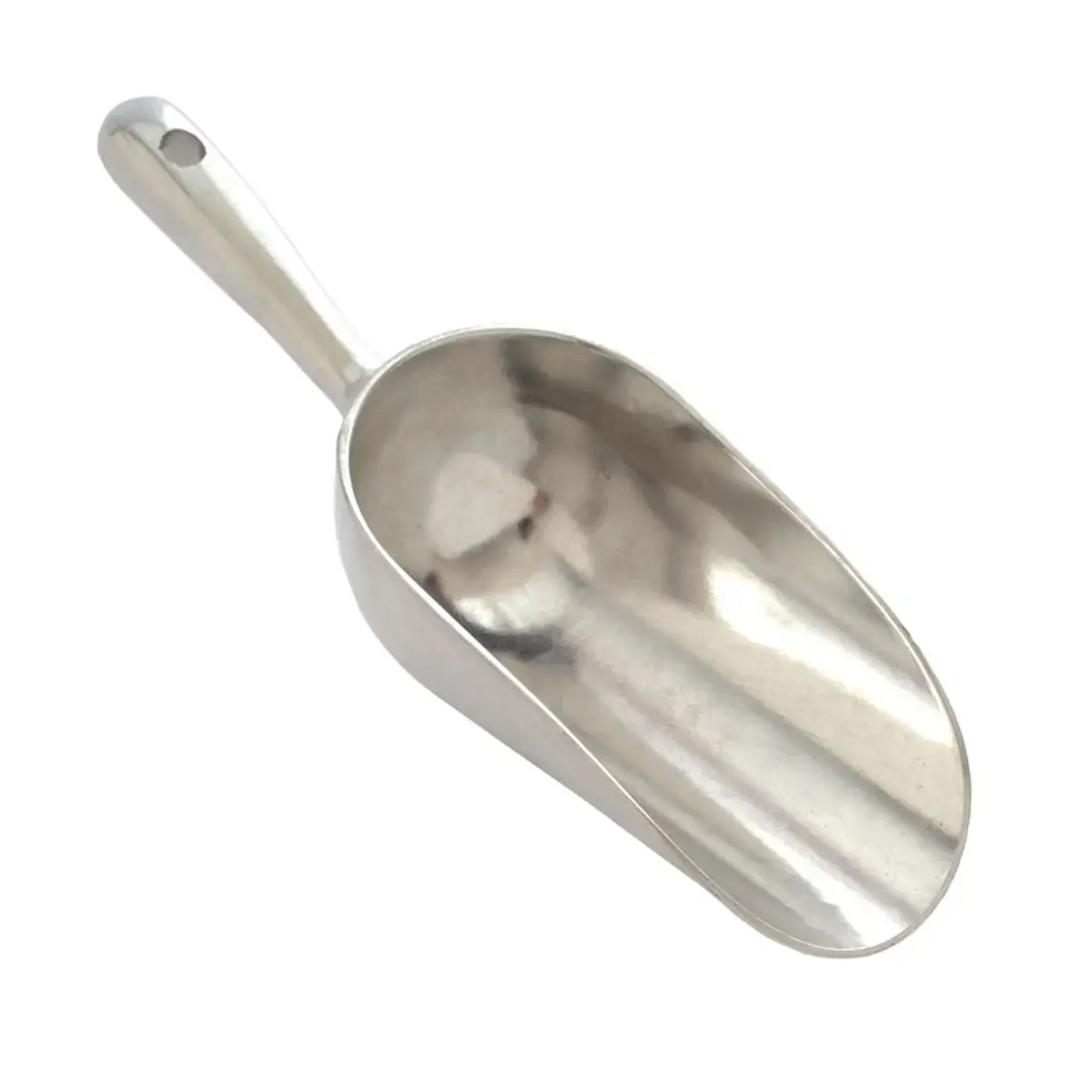Gas stoves fill the air in your home with particulate matter (pm), which has been found to increase cancer risk in the long term.
So next time you buy a stove, consider choosing an induction stove.
Btw, gas stoves being better or faster than induction is a myth. They have certain specific advantages, but they are actually slower.
Obligatory Technology Connections video:
https://www.youtube.com/watch?v=eUywI8YGy0Y
They have certain specific advantages, but they are actually slower.
This entirely depends on the stove. Consumer-lever stoves? Sure, definitely. Commercial stoves? Probably not. Commercial stoves put out 3-4x the BTUs of a high-end consumer stove, and usually can’t be installed in a home because they require significant shielding around them (so you don’t burn a building down) and a very high flow hood. The highest-end Wolf range has a single burner that has a maximum output of 10,000BTU, and costs a whopping $17,000; a fairly basic range top for a commercial kitchen has six burners that can all output 32,000BTU, and costs about $3700. For stir-frying specifically, you can get a single ring wok burners outputting 92,000-125,000BTU starting at about $700 for natural gas (and a helluva lot more if you use LP).
Unfortunately, I can’t find a solid conversion between gas and induction stove capabilities.
Oh, and FWIW - if you live somewhere with an unstable power grid, a natural gas or LP stove will continue to function when the power is out, albeit you’ll need to light it manually. We lose power fairly regularly due to storms–usually only a day at a time, but sometimes as long as 3-4 days–and it would be a real hassle to have all electric appliances when there’s no power.
a natural gas or LP stove will continue to function when the power is out
LP camp stoves work without power and are a good backup for an electric stove
Yeah, a coleman (or equivalent) 2 burner camp stove combined with the adapter to use a full size propane tank is super handy. Combine it with a cast iron griddle, and you can functionally replicate a Blackstone for much much cheaper. It’s also way better for high heat cooking if you don’t have a good stove fan that actually vents outside.
Also, sometimes when power goes out, gas does too (it’s still a grid that can fail).
we got a griddle attachment for my weber babyQ so we can take it camping and fry bacon on it. I’ll take that over a coleman any day.
Yeah, I want one of those, too. I think it fits different needs, though. Stove vs grill.
yeah, it basically takes the place of a frying pan. if we want soup or coffee, we’ve still got a one burner camp stove for that. we end up using the grill more tho.
Oh, and FWIW - if you live somewhere with an unstable power grid, a natural gas or LP stove will continue to function when the power is out, albeit you’ll need to light it manually.
This is only true on the simplest (or older) gas stoves. Most models these days have all sorts of electronics, including features to prevent gas leaks.
Mine works when the power is out. The only electrical part is the starter.
Also, I can heat my house (well, keep the temps above freezing) with my gas fireplace. I just have to manually click the pezioh electric starter.
OTOH, when the power is out, I can’t run my stove vent hood, which vents outside and is why I don’t worry much about “particulate matter.” Never seen a non-externally-vented gas stove; I thought they were against code in the US, but whatever. The fireplace is entirely enclosed and sealed, and vented outside; heat circulation is via a fan that runs air around the heat box - which also doesn’t run with power out, making it less efficient. But it still beats having the pipes freeze.
Never seen something like this?
It’s a pain in the butt cause all it does is suck up any smoke and direct it towards your smoke detector.
Nope, not personally. I mean, I have had hoods that just vent into the kitchen, but never on a gas stove; only on cheap electric ones.
I believe they exist, but IME gas stove installation code says it has to vent outside, because of the gas fumes. With electric stoves, installers can get away with just venting into the kitchen, so if something burns you get your smoke alarm.
I roast coffee beans, and I do it by placing a cookie tray on my stove, and put the roaster on that. It is a major PITA, but if I do a dark roast it produces smoke - like real, dark, something’s-burning smoke - and if I don’t have it under the vent it sets the smoke detectors off every time. But under the vent, it just sucks it all out and jets it outside.
This is the first house I’ve owned that has a gas stove, but my in-law’s place has a big Viking in it with, like, 10 burners; it’s a monster, and the hood on that looks like it came from a restaurant. Their’s vents outside, too.
I have no doubt there are places in the US where gas is cheap and even trailer homes have gas stoves and no outside venting, and maybe older homes. I dunno. But every gas stove I’ve personally seen in the US in the past decade has vented outside.
I think there are some municipalities with that in code, but it’s definitely not universal in the US.
https://codes.iccsafe.org/content/IFGC2021P1/chapter-5-chimneys-and-vents
I live in a house with a gas stove that vents into my kitchen.
I definitely hear you about the coffee roasting. I assumed when they said that it smokes that it would just be like thin wisps, and I definitely smoked out my house. I’m not going to do it inside again.
Yeah, our last house had an electric stove and vented into the kitchen. I had to roast out on the deck :-(
Yes, they exist, as I acknowledged. How old is it? Is it representative of what you’d find at a standard big box retailer?
For it to work, it means the controls must all be manual and mechanical. This is in contrast to the “smart” features that are very common.
I also live in an area with frequent power disruption. We have a backup generator. It is more than enough to power the electronics in our propane gas range, but nowhere near enough to power an electric range.
1 kW is 3412 BTU/h (=BTUs)
Most induction stovetops have a boost function with around 3-4 kW (that’s about 13000 BTUs).
BUT contrary to a gas stove top, almost all of the energy is actually put into the pot instead of the surroundings (only 30-40% of the energy from a gas stove is used to heat the pot). Meaning that a 4 kW induction cooktop should be comparable to a 40’000 BTUs gas stove (single burner).
Okay, good deal. So, in theory, an induction stove that’s 3500W should be approaching the heating ability of a typical commercial range.
Yes, and you can test it pretty easily by just seeing how much faster a pot of water boils on induction, on-par with the boiling times of commercial burners.
Also, in a commercial setting, induction stoves cook just as effectively with less energy which means they don’t put out nearly as much heat to the environment. For a chef, its the difference between working all day in 90-degree spaces to 70-degree AC. I’m an engineer who works on a lot of commercial kitchens (among other things), and our chefs love the electric kitchens we’ve delivered.
When you’re cooking for work, 8+ hours a day, being comfortable while you do it is a major game changer.
The other thing they enjoy is the level of control and consistency - many professional induction ranges will let you control on temperature, which means you can quickly adjust to specific values in order to, say, sear a steak at 500, then finish it at 300 until it hits the desired internal temperature.
4 kW induction cooktop should be comparable to a 40’000 BTUs gas stove (single burner).
So this is 4000 watts? What household circuit can support that?
Plenty can. Just need a 240v 30a outlet or higher
Which isn’t a thing in the states anyway.
I’m confused as to why you’re so confident. The US has 3-phase power and gets 120V from line 1 to the neutral. If you use line 1 and 2, you get 240V. More than enough to power an oven. This is the case in every modern residential home in the US because they have a national building code.
Yes, I’m aware that you can do this but there are not readily available outlets throughout a home for this, lol. Yes, let me move my stove or dryer so I can plug my wok induction stove in.
…You do know that an oven needs a dedicated outlet, yes? As in, if you don’t have a 30-50A receptacle in your home, one must be installed in order for you to have an oven.
That is exactly what I have running to my traditional electric stove and I live in USA.
Yes it is? The US very much has 220v for power hungry stuff. Things like ev chargers, central ac units, water heaters, electric clothes dryers, etc. It uses quite the variety of different plugs for the various amperages
Edit: technically its 220v*
Uhhh, tons of people in Europe are on 240V 3 phase power.
My oven is 3100W and that is just fine. 3 phase consumer induction cooktops can easily go that high or higher.
Once my 3 phase charging pole is put in, my car will charge at >10000W on a household circuit.
Idk about my math but most American household circuits require stoves to be on a (220V) dual phase 18 amp circuit. Which should output around 8kW (18A * 220V)
Should be a lot more than 18A. Should be closer to 30A-50A to account for usage. 18A is what a kitchen receptacle would require and is so low that it would trip constantly. I’m Canadian so I mostly know the CEC but the NEC requirements in the USA are very similar.
I was thinking of a single dual phase outlet. Is it also higher amperage as well as voltage?
I have to correct you (sorry) when you say “dual-phase” because homes in Canada (my country) and the US don’t have dual-phase electricity and haven’t for many, many decades. What you are talking about is called “split-phase” and is actually just a single phase that’s been split using a neutral/return cable.
To actually answer your question, yes, it’s higher amperage and higher voltage. Every circuit breaker is really just a “tap” into the panel in order to create a parallel circuit at the applied voltage (usually 120V) and whatever amperage the breaker is rated for (after ensuring that you’re using the correct size of breaker, of course).
The main reason why amperage is really important for larger appliances is because the cable used to plug them in (whether that’s by literally plugging it in or by hardwiring it into the panel) needs to be thick enough not to overheat from regular use. When precautions aren’t taken, it’s pretty easy for the cable jacket to melt (happens around 90 degrees C) and for the bare wires to eventually start a fire.
Thanks for the answer!
Here in Italy most houses used to have contacts allowing max 3kW, but nowadays it’s more common to have 4.5kW (with smart utility meters which allow 30% over current for 3 hours).
Still have to be careful if you’re running a washing machine or something like that, but it’s doable.Of course old houses may have insufficiently-sized wires, and that’s another can of worms.
A random Better Homes and Gardens article clocks a 2000 square ft (185 square meters) home with central air conditioning at nearly 19,000 watts.
https://www.bhg.com/home-improvement/electrical/how-to-check-your-homes-electrical-capacity/
So I think most homes could handle that in general, but I don’t know about specific wiring requirements to handle that kind of power draw from just the kitchen. So do these things require that level of retrofit?
I’ve never had an induction stove, but I grew up with an electric stove - IIRC, it was on a separate fuse from the rest of the kitchen, and it had a weird plug because it needed a different voltage than most other appliances.
I would assume the requirements for an induction stove are more or less the same… Switching from regular electric to induction would probably be easy, but gas to induction would take a lot more work.
I have a Viking with 15k burners. No shielding needed, but huge upgrades to air exchange and a really powerful hood fan were.
Yeah, I don’t mind electric stoves but I gotta have one large high pressure burner for woks and griddles
My partner won’t let me have one. :( It’s too dangerous since our house is a cedar cabinet, and cedar burns VERY well.
It’s completely baffling that there are people unironically still defending gas stoves in 2025. There’s no discussion to be had on the subject any more, induction is superior and that’s final.
In places where natural gas is cheap and electricity is expensive cost is a factor
I think the people who claim gas stoves are best likely grew up either not cooking much, or had a decent gas stove, so their first exposure to an electric stove was super cheap, crappy electric coil stoves in student housing, or wherever they first lived as a young adult. Then when they were able to afford better, they got a better gas stove.
I have a really crappy gas stove, and it makes me yearn for the cheap electric coil stoves of my youth.
People say that gas stoves are more powerful and responsive, when the truth is that more powerful stoves are more powerful, and “responsiveness” is a fake concern. My crappy gas stove takes forever to get a pot of water boiling, especially compared to coil stoves. Yeah, you can turn a gas stove to 100% quickly, but that’s only better if it can put out more power. It won’t heat up any faster than an electric stove if the electric stove takes double the time, but also has double the power. There’s also not many cases where “time to maximum heat” is what you care about, I can’t think of any.
Responsiveness the other way (hot to cool) doesn’t matter when you have a high thermal mass in the pan (or the pan itself has high mass), it only matters when the pan and contents are light, in which case, you just take the pan off the heat.
The way coil stoves cycle their power on and off is incredibly dumb IMO.
Induction cooktops don’t do that, but it blows my mind that it took as long as it did to get a duty cycle frequency somewhere above ‘once every 30 seconds’.
When the power goes out in sub zero temperatures, and your heating does too, it helps to be able to make hot water on the stove to warm up.
Otherwise, yeah induction is better.
A $50 dual burner camp stove solves that (or even cheaper, a $12 single burner backpacking stove if you have less space).
While you’re correct in general, in places where the power is out for a week, a camping/backpacking stove would be ill-suited to the task of keeping multiple people warm and fed. Especially in a house and not an apartment.
A gas furnace won’t keep you warm when the power is out, either. I will say a camp stove feeds just as well as a regular stove, after all, how often are you using more than 2 burners simultaneously?
A gas (or wood) stove will, which is why they’re still common in rural areas that face power outages more frequently. Your comment is the first mention of furnaces.
Personally, I use more than 2 burners pretty often. Honestly, it’s a bit of a waste of everyone’s time to debate whether or not a camping stove is a universal replacement for a gas stove since everyone has different needs.
I would be pretty pissed if I had to use a camping stove instead of a gas stove during an outage just because. They’re totally different tools suited for different use cases and environments.
Typically those shouldn’t be used indoors though, right? Usually a gas stove will have ventilation, but no gas stove, then likely not enough ventilation and you’ll need to step outside or crack a window to cook with gas.
I would agree in places with good infrastructure. I lived somewhere with rampant power outages, sometimes for 5 days at a time.
Gas was sure nice then.
I didnt watch the video yet but do you have any estimates on how much pm is released? Where I live the air contains about 50 mikrograms per cubic meter and I’d like to know which is unhealthier: using a gas stove without ventilation or going outside and breathing fresh air
Does this apply if you use extraction?
I’ve had induction for many years, but I really want a combo with both. Making wok on induction is crap as the sides don’t get hot at all. I also have a hot spot in the center of all frying pans which is annoying when frying bigger things or several things at once.
My dream is a Gaggenau or Bora top with one side induction and one side gas. I already have the mid extractor with outside piping, so no recirculation.
I just cannot justify the $10k price tag and nobody else makes it with a fan in the middle.They do make professional grade induction burners for woks that are curved, they are beautiful but prohibitively expensive
Yeah I’ve seen those, but not on a hob with downward draft in the middle.
Maybe someone will make them in the future or I win the lottery and can pay Bora/Gaggenau prices….
The whole idea of having your house hooked into a gas line is bonkers to me. I’m a plumber whose constantly fixing leaking pipes in people’s homes. Gasses have even higher tendency to leak than water and it’s much harder to detect. In the worst case scenario it can literally blow up your house so that’s there’s nothing left of it. No thank you.
The studies I read, there was no ventilation / exhaust fan. The point was that low income households using these stoves often don’t have proper ventilation and it makes them dangerous. I didn’t find much evidence that using them with proper ventilation is actually a serious problem.
Further, cooking releases all sorts of chemicals from incomplete combustion in the air if something is burning, as well as the toxic chemicals release from nonstick cookware at very high temperatures, so cooking without ventilation is bad for your health would be the message I’d take away. I find most people are completely unaware of the hazard.
I’m not even sure I would call it “low income households”, more like “older building/houses”. Plenty of expensive apartment units are in old buildings (I’m looking at you NYC) without proper ventilation.
I own a unit in a co-op in a building that is over 100 years old. I have a gas stove. There is a vent on my above-range microwave but it’s just a filter that blows it back into the room. I do a lot of cooking. I’m in danger.
Indeed. Charcoal filters are to catch some odours, the aluminum will catch some grease, but ‘natural gas’ is a whole lot more than methane, and think the same is true for propane.
Very few residences have proper ventilation. In the US, a microwave above the stove is common. Microwave often do have a fan function, but the vast majority don’t vent outdoors. I doubt that running air through a very thin filter will do much good.
I hate this. I think it should be illegal. Or make a building code that there has to be a real extractor hood above the stove in all cases.
Even charcoal grills inside are fine with proper ventilation. So you’re right, but your also not saying very much.
Yeah I’m not sure what the purpose of the comment was. To convince people to continue using gas on the off chance it won’t increase cancer risk? That’s not a compelling reason to use gas. It might not kill me.
I’m pretty sure the comment was to emphasize the importance of a proper working stove hood.
it also emphasizes the importance of knowing how the items built into your house work.
With proper ventilation you can do everything, you can work with hazardous gases and nuclear materials, if the ventilation is sufficient.
Radioactive particles perhaps but nuclear radiation is not affected by airflow
But if the flow is good enough, all the material will be sucked away before it has time to emit.
Radiation ventilation is fun to say
Thanks for the clarification.
I’ve always cooked on radiant electric (not induction) stoves, but gas stoves are amazing. Literal fire just works like nothing else. Faster cooking != Better cooking, why are you conflating them?
I’ve never lived in a closed up efficient new house either, those seem like anything you cook would be problematic. All cooking releases something.
Will almost certainly stick with electric personally (whole house is electric only) but if I had an unlimited budget it would be gas stove, big whomping vent fan, and ovens with both steam and fan.
Induction worries me because we had an induction plate and it made a terrifying shrill noise, I worry that the high end ones do the same but we can’t hear it. Which seems awful for the dogs and cats.
I’ve got a gas stove and a highly inefficient house. I recently got an air quality detector and yeah, it goes off every time I cook anything on the stove. Not so much if I use the oven.
I’m pretty sure the premise is correct… though unsure as to the degree. I would get an induction stove in a heart beat. Just… you know… cost and all. (Buy the stove, update my wiring to not suck where the stove would go, things like that)
Most induction burners are silent. I was an adamant supporter of gas over electric, but induction is just superior.
Why bother with gas if resources aren’t an issue? Something savagely luxurious about cooking over wood. Primal but decadent.
Everything else being equal, of course electric and induction stoves are preferable to gas. I spend most of my life with an electric stove, no apartment I ever saw had induction, but I didn’t particularly like the gas stove I had to use for some years.
But if you want the worst user experience ever, find an electric stove with touchscreen controls. What the hell, landlord, where did you even find that one?
Having only cooked on radiant electric and gas, I gotta say I prefer the experience of cooking on gas, but not by enough to accept the documented risks, even if they are small. I hope at some point I’ll be able to have an electric range top as my primary.
Induction is the best, I’ll never go back
I cannot wait to finish uni and move to a place without a gas stove. The thing is they renoveated the kitchen just before I moved in but they decided to put in a gas stove for whatever reason.
Unless it costs you $15k+ to upgrade your house to 220 :/. Ask me how I know
It’s the best, got one not too long ago, and same, I’ll never go back. Immediate temperature control.
I mean, you have immediate temp control with gas too?
I’ve never seen a gas stove with temp control. I’m not even sure how that would work. Controlling the amount of gas, sure, but not the temperature. In an induction stove, you can set it to 150 degrees, and it will hold that.
It’s significantly immediate-er with induction - particularly going from cool to hot. Boil water in 2 minutes and handles don’t get hot in the process. And since nothing is heating except the metal of the base of the pan there is no residual heat from the cooktop parts or the sides of the pan when you turn it off. The temperature drops much faster.
I went back to gas after 5 years cooking on induction and miss it a lot. Cooking something like pasta that requires boiling a sizeable quantity of water takes 2x or 3x longer on gas, even with a very powerful burner.
They probably had a non-induction electric stovetop before.
Yes, but we’re talking gas vs induction, right?
Right, so it’s the same but without the cancer and explosions.
But without electrocutions 😋
Interesting.
Now let’s see that beautiful, clean coal.
Not quite as immediate! You’d be surprised at the difference
With free cancer!
Don’t forget your aluminium hat against the 3G
You were making good points, what happened?
Well show me the study, I mean people all over the world uses highly reglemented gas stoves for not very much time a day and we’re not getting cancer ftom it I bet. I do bet a plastic TV might emanating more dangerous crap for example. Or breathing in a city.
Last “study” I read about gas stoves, it was a crap study too but even they said there is no danger whatsoever, except if you like use it in a non at all ventilated space. => Some website took it and ran with it “gas stoves could cause cancer!1!”. And here we are. It’s like that fake story sbout vaccines & autism.
We have gas heaters for water, sure if you don’t have any ventilation then thats bad, but if your electric setup is bad, induction won’t save that either?
I should probably get off the internet for today 😋 go boil me a slow cup of tea ^^
Cheers & thanks warbond
This guy thinks science is a conspiracy lmao
Show me the study.
You seriously just asked me to go find you proof of something heavily tested and demonstrated as fact? Bahahaha. Go waste someone else’s time 🤡
Induction is best in theory, however in practice it’s unfortunately often paired with these shitty buttonless capacitive controls that are harder to decipher that hieroglyphics as well as “”“smart”“” features
They do still sell induction stoves with classic dumb buttons but they are either hard to come buy or aimed at professional chefs, which instantly adds two zeros to their price
Induction also doesn’t work with aluminum items like a moka pot without an “induction adapter” which is just a steel plate.
Aluminum doesn’t belong anywhere near food. Get a stainless moka pot!
Tell that to my aluminum foil.
I have a regular flat top glass stove WITH KNOBS that works with ALL PANS, not just magnetic… then I have a standalone induction unit for when I need to really crank up the heat.
Works a dream!
That one that works with all pans is an electric resistance coil. It’s slow as molasses. But hey, more power to you if you can use it well. I have a standalone induction unit as well and it’s amazing how little I have to use anything else.
The interfaces are usually really bad, yes. The technology itself still makes up for this particular shortcoming, but they need to step up their game.
Tbf the flat buttonless style makes them really easy to clean.
Yeah, I hate the interfaces, but especially the super-loud non-mutable beeps which seem to be common on every model I’ve seen. My two-burner induction setup has analog knobs for temp control, which is awesome, but it stills beep when you turn them, with every single temperature increase. Drives me crazy.
I’ll never go back to gas though. My new apartment came with a gorgeous brand new gas range, and it absolutely sucks compared to my $50 countertop induction.
Mine has simple capacitive controls. Turn it on, higher number is more hotter. Very simple.
Apparently it has other features, not bothered with them.
My stove apparently has wifi. But why I would put that thing on my network is beyond me.
wireless house fire
Wifire sounds like a 90s hard drive protocol.
Do you have more detail on this? What types of particulate matter exactly?
Not OP, but combustion byproducts/impurities mostly. Get a air quality sensor and watch it go mad when you start cooking.
The one real downside to induction is actually its speed. You can really easily burn your food very quickly if your not careful. IKEA sell an induction hot plate for $40AUD, well worth giving it a try.
Yes, a little bit… Burning any kind of fuel in your home is going to produce carcinogens.
But it’s really nothing to get too excited about, and cooking on electric is bullshit
It depends. A really good induction stove is fine. The cheap ones they put in rentals are all really annoying though. Bad UI is my main gripe with them honestly.
I think they are more than fine but bad UI is real
I used to be 100% for gas ranges. Except for a couple of specific usecases, my 200v induction stove is great. I have a separate cannister gas stove if I want to really go to town on a wok or something. I’ve been converted.
As other people have said, induction is alright. Way better than traditional electric anyway.
More than alright, it’s amazing
This just in… Sunlight causes cancer! Exactly why I have this big scab on my cheeks. Get screened folks, especially if it runs in your family
Yeah, I prefer my gas stovetop than any crappy induction.
Have they reinvented buttons yet or do you spend your time long-clicking and watching out not to short the touch-screen-top with 1 drop of water?
Jesting aside, induction is probably good but the bullshit that gas stoves causes cancer is just an unfounded lie. It’s like being scared of the microwave owen or “3G mobile”.
I think you’ve confused coil for induction, and gas stoves definitely cause cancer. So do cars.
Show me some propf of that, a scientific study. Make me change my views.
we have a decent quality induction range and electric stove and we’d never bother considering to go back to gas
I think that’s the thing though… You need to invest in a really good quality electric cooker to get something decent… Whereas any old?Cheap gas appliance will get the job done.
Plus every electric hob I’ve ever used has got bullshit touch sensitive buttons that don’t like wet fingers.
yes…why cant dials
I remember reading a study on this where all the scientists replaced their home ranges because the results were so bad.
There are two kinds of electric. Induction, and coil. Are you talking about induction or coil?
Cooking in electric is fine, just different. I had an exposed coil stove for a while which was passable, but my glass top coil range is rather good. I grew up on gas and honestly my only complaint about electric is a bit slower heating time and it doesn’t react as fast as I’d like, but it’s not nearly as bad as people like to claim.
I read that running an extractor hood mitigates the risk a fair amount. Not completely, but enough that you shouldn’t worry if gas is your only option
Many people don’t turn the hood on until food itself is creating a lot of vapor because they are usually so noisy. Meaning the hood often helps very little in practice, although in theory you are right.
Or they have a fan that just redirects the exhaust into the house
My stove has a “hood”/fan that runs through the microwave and into a cabinet and that’s it. What can I do? After reading all this I intend to keep the window open nearby when cooking, and I always have two large air purifiers running in the living room attached to the kitchen.
For a lot of these large scale, epidemiological findings, it’s important to remember that the effects are small enough that you pick them up on a population level over a lifetime. I’d say that if you can, find a way to properly vent your stove outside if you are doing some home improvement. If you are replacing your stove, consider induction instead, and in the meantime, having an air purifier is good. Opening a window is probably also good. Other than that, I wouldn’t be super alarmed. Obviously, if you have little kids or something, you might have a lower tolerance for potential pollution, but it’s good to think about these things in context. Alcohol causes cancer, but everyone still drinks.
Thank you, that is a great answer that helps me both feel better and take steps if necessary. 10/10 would ask again.
Edit: sorry I know this sounds sarcastic but I really am grateful.
I’ve turned mine on, even if only on low, as I light the stove since first reading about this, but I think I’m a little more fact-absorbent than most people
Since this article is specifically about pm 2.5, I’m going to chime in and say I have a gas range with no extractor, and the only time my pm2.5 sensor picks anything up is when frying generates smoke and oil aerosols. That’s more a function of cooking temperature than fuel, and my induction hotplate will generate just as much.
CO2? Definitely more with gas. Trace chemicals? Probably more with gas, but all the studies I’ve seen are just about running the cooktop, with no food, in a sealed room. Run the extraction hood or open a window when you cook - it’s not just heat source.
Alright so you screwed up posting this, because I’m actively looking for a dual induction burner setup, and now I want your advice. Ideally I want a “linked” dual burner so that I can put a square skillet pan across both burners, there’s basically like one of those online, and then a bunch of dual burners that are not linked and slightly different power on either side. Wat do? Anyone have a good experience with this situation yet?
You should just get the impulse cook top last range you’ll ever need, super cleanable, magnetic knobs— is expensive but will be the last one you’ll need: https://www.impulselabs.com/
IT HAS KNOBS IT HAS KNOBS ITHASKNOBS OHMYGOD
Sorry, I got a bit over-excited. I hate capacitive touch controls in absolutely anything with a passion and I in particular hate them on my stove because I don’t want my stove to start beeping when I wipe it, nor do I want the controls to malfunction any time they get wet because I accidentally overboil the water.
Receives Software Updates
I feel iffy about this part though. I don’t want my stove to have software on it.
That one does look amazing! I’m unfortunately limited to a portable one in an apartment. Added to the bucket list though for sure!
God that looks good, the power and exact temp display is pog
This looks brilliant in a lot of ways. For me being able to set a precise temperature would be incredible. I have some doubts about the battery system though. I can understand the utility but surely it will degrade over time? I can’t see how it’s the last stove top I’ll ever need. The battery combined with the software update thing makes it feel like another product I’ll have to rebuy every 3 years or so.
I am with you on this, I don’t want a cooktop with a damn battery and software updates. That’s ridiculous.
deleted by creator
















